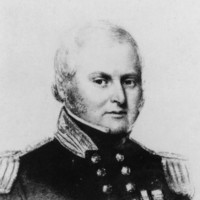Person
ContributeSir John Hindmarsh (1785-1860) was the first Governor of South Australia. A naval officer through and through, John Hindmarsh began his career on HMS Bellerophon at the age of fourteen and served in Nelson’s Navy in the Mediterranean and East Indies. In 1802, he applied for the position of lieutenant with papers showing a birth date of 1782—instead of his real birth year, 1785—and received his promotion at the age of eighteen.
Fresh from an unsuccessful military venture in the Mediterranean, Hindmarsh was well placed to take advantage of Colonel James Charles Napier’s resignation from the Governorship of the proposed colony of South Australia in 1835. While Napier had hoped to give the position to Colonel Light, Hindmarsh secured the approval of Lord Glenelg.
In July 1836, Sir John Hindmarsh, his wife Susannah Wilson Edmeades and their four children set sail from Spithead, England. In his command of HMS Buffalo, and its 173 passengers, Governor Hindmarsh was an autocratic and abstemious captain. He had little time or inclination to deal with non-seafaring types, and was not well-liked by the passengers.
As a naval officer, his greatest concern was access to a working Port. Hindmarsh believed that the colonists should settle at Port Lincoln. Even before departure from England, he regularly disagreed with the surveyor-general Colonel Light and Commissioner Fisher about the placement and governance of the City of Adelaide.
Once in the colony, the disagreement about the site for the city of Adelaide continued. After a failed attempt to exert his authority – he lost a public vote to move the site of Adelaide – Hindmarsh’s authority from then on was continually disputed and his governance was hampered by opposition from Fisher and other like minded colonists. Eventually bowing to pressure the Colonial Office recalled Hindmarsh to England ending his role as Governor of South Australia. He went on to become the governor of the island of Heligoland, on which he found a somewhat more successful venture. After returning to England, he died on the 29 July 1860.
Media
Add mediaImages

Image courtesy of the State Library of South Australia, SLSA: B 45581, Public Domain

Image courtesy of the State Library of South Australia, SLSA: B4263, Public Domain

Image courtesy of the State Library of South Australia, SLSA: B 5836, public domain


CommentAdd new comment
Quickly, it's still quiet here; be the first to have your say!